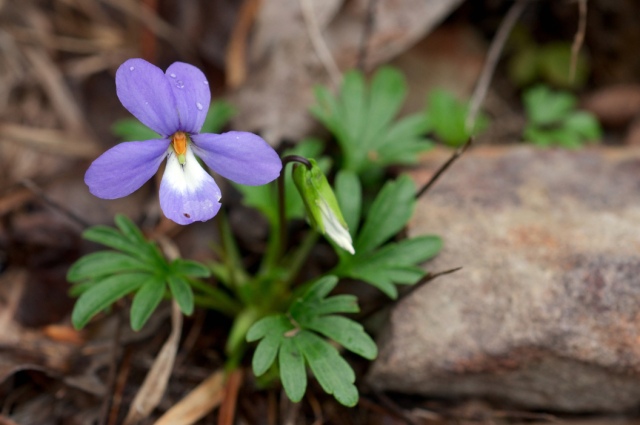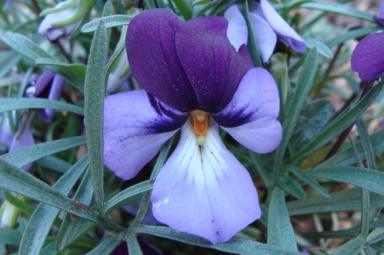Eric Hunt, an ANPS member from Little Rock, captured this Viola pedata on September 30, 2012 near Cantrell/Highway 10. The Showy Bird’s Foot Violet is usually a spring bloomer, but is not above trying its luck at fall reproduction.
ANPS botanical expert Eric Sundell says, “Most violets bloom in fall with asexual, self-pollinating, apetalous (no petals) flowers; the flower buds hardly open at all, but seeds develop in rather typical capsules. Viola pedata is taxonomically distant from other stemless violets. A lot of spring-flowering things are blooming this fall, confused by the drought that put them into dormancy and now fooled by mild, wettish weather. “
North America has a huge number of native Viola species. The USDA Plant Database lists 30 different varieties of violets that have been identified in Pulaski County, AR. From rocky and dry to moist and rich a violet variety thrives in almost every environment. Viola pedata prefers soil that is a little dry (at least well drained) and usually fairly poor. They typically do not respond well to being in a moist, rich garden environment.
Bird’s Foot Violet can be found in a huge variety of colors. Variations occur frequently, even within colony groups. Hybridization is thought to play a big role in producing this variety. Viola pedata is the listed as host plant for the Regal Fritillary Speyeria idalia. Like most violets, the flowers and foliage of the Showy Bird’s Foot Violet is edible.
Thank you Eric, for your sharp eye. And thanks to both Eric and Sid for sharing your photographs.
by John Perrin ANPS
Links to more information.
The Ethnobotanical Uses of the Genus Viola by Native Americans
written by Scott D. Appell published in The Violet Gazette, Summer 2000
USDA Plants Profile for Viola pedata
Lady Bird Johnson Wildflower Center on Viola pedata



